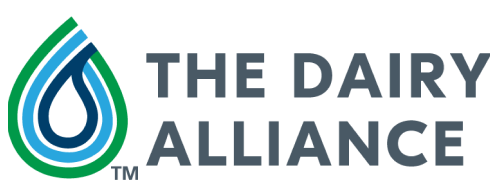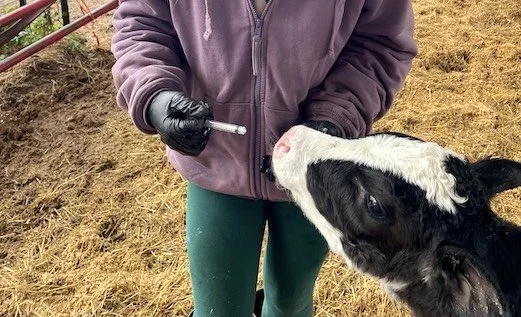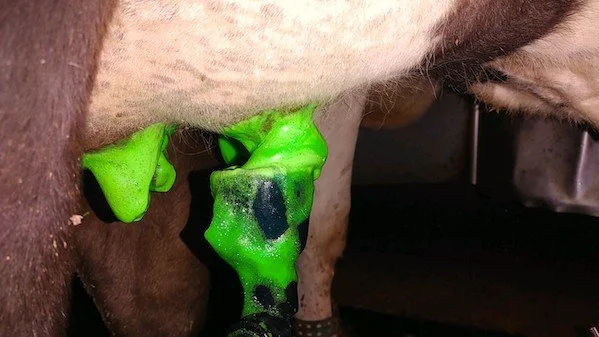How Farmers Treat Sick Cows
All milk is antibiotic-free. When a cow gets sick on a dairy farm, farmers follow strict withhold guidelines, identify her with a colored leg band, and remove her from the milking herd and into a hospital pen. This protocol is because the sick cow receiving treatment is still producing milk. The colored bands and similar identifiers used by dairy farmers across the country are a reminder for everyone working at the dairy that she must be milked separately. Once the treated cow is milked, that milk is discarded.
The steps to ensuring antibiotic-free milk do not stop there. Milk is tested for antibiotics before it leaves the farm and then again when it reaches the processing plant. If a truckload of milk tests positive for antibiotics, the entire truckload of milk is disposed of and the responsible farm must pay for that load. Needless to say, farmers only use antibiotics when an animal is sick and follow strict protocols set up to make sure that milk never reaches your grocery store shelves
Cresthaven Farms in Galax, VA, follows a vaccine protocol developed with the farm’s vet/sister/part owner of Cresthaven. Now that is a lot of hats! The farm vaccinates at critical stages from newborn to adult cows, which helps reduce the need for treating the cows with antibiotics. When a cow needs treatment, we identify and mark her so that her milk will not go in the milk tank until it is free of antibiotics. Milk is tested and retested before it is bottled and hits the shelf. If milk from a treated cow somehow ends up in the bulk tank, Cresthaven discards the entire tank to ensure consumers receive fresh, safe milk.
Blackwater Bend Dairy in Rocky Mount, VA, takes various steps to prevent mastitis in the milking herd. Mastitis is an infection in the cow’s udder which usually requires treatment with antibiotics. To prevent the development of mastitis, workers maintain clean housing and bedding for the cows and keep the milking process clean. This includes cleaning a cow’s udder before she is milked (that’s the green foam in the picture) and dip the cow’s teats after milking with a solution that helps prevent bacteria from entering the udder. The milking equipment is kept clean and in good working condition.
Even with these measures in place, sometimes cows can still get mastitis. When this happens and a cow needs treatment using an antibiotic, the cow is identified with a leg band, her treatment is recorded in multiple ways, separate milking equipment is used, and the milk is discarded. The cow receives approved dosages of antibiotics and is monitored throughout her withdrawal period from the herd.
Brown Dairy Farm in Southside, AL, has another method to easily identify cows that need separate milking. When any of the cows receive a vaccine to build their immune systems, the cows get marked with animal-friendly paint. These newly vaccinated cows can stay with the other cows in the milking herd, but when it is milking time, the marking lets the farmers know to discard that cow’s milk.
So how does this all come together when a cow needs treatment? The Steer family of Sunbow Jerseys in Cottage Grove, TN, knows how to care for a sick cow. While out in the pasture, the family realized Chippewa the cow had mastitis. Chippewa received Flunxin to help her feel better, YMCP powder for her stomach, and an antibiotic to treat the mastitis. After receiving the colorful leg bands, Chippewa took a sick day and stayed in her own stall with fresh feed. The farmers noticed her chewing her cud later, which is a good sign of a happy cow. Even after Chippewa’s mastitis was treated, her milk was not sent to the tank. Chippewa’s milk is tested after treatment so she doesn’t reenter the milking herd early.








